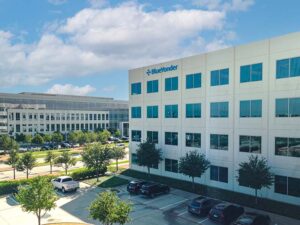Unveils US$ 10mn+ tech investments and AI trends in the report

Blue Yonder, the world leader in end-to-end digital supply chain transformation, recently released the results of its inaugural ‘Supply Chain Compass’ report highlighting nearly 700 global supply chain leaders’ key strategic priorities: implementing new technology (51%), improving efficiency and productivity (40%) and building more resilient supply chains (29%).
The three-part report features responses from senior supply chain leaders in North America and Europe who work in manufacturing, retail and logistics. The report also highlights top strategic priorities for Supply Chain leaders like AI adoption, tech investment (US$ 1mn–US$ 10mn), and a growing focus on sustainability.
Achieving each strategic priority over the next three years will require specific actions, and respondents identified better demand planning (46%) and quickly obtaining and analyzing data on performance (46%) as two of the top actions they believe are essential to success.
Tracking solutions
This was followed by investing in tracking and visibility solutions (45%), digital software transformation and innovation (41%) and managing supply chain costs (33%). In the current macroeconomic environment characterized by volatility and rapid change, focusing efforts on each of these actions will be critical.
“A consistent theme among surveyed leaders was the adoption of innovative solutions that deliver true end-to-end visibility across the supply network and enable a more connected, intelligence-driven approach to demand and supply planning,” emphasized Andrea Morgan-Vandome, Chief Innovation Officer, Blue Yonder.
“The report highlights that, beyond mitigating risk, decision-makers are increasingly exploring next-generation AI agents to advance sustainability goals and build supply chains that are not only faster but also more efficient,” she added.
Implementing new technology
A staggering 82% of leaders agree that outdated technology will hinder their supply chain’s potential, and 51% state that implementing new technology is a top priority in the next three years.
With technology being a key enabler of supply chain performance, decision makers recognize they will need to prioritize new solutions and tools to respond to market challenges and growth opportunities.
Barriers to AI adoption
Generative AI is currently under-implemented compared to traditional AI, which is largely used for prediction and automation. The majority of respondents (83%) are using (or are implementing) AI-powered automation, and 78% said the same of machine learning and predictive AI. By contrast, just 36% are using or implementing generative AI.
Understanding barriers
Human Impact: Of those with no plans to implement generative AI, 51% said that their organization will prioritize a people-led approach over cutting-edge technology.
High Cost of Adoption: Organizations with an expected technology budget lower than $500,000 for the next one to five years are significantly less likely to consider implementing generative AI.
Different Priorities: Organizations not currently using generative AI aren’t necessarily behind — they’re prioritizing other strategic initiatives, such as automating inventory management to drive efficiency.
Businesses that focus on transportation, order management and execution and fulfillment are significantly more likely to be investigating the implementation of generative AI (46%), while those in logistics (16%) are behind the adoption curve with no plans to implement.
Intersection of Technology and Sustainability
Overall, leaders are initially focusing on tangible efforts to impact sustainability, but many are not yet embracing technology solutions that can provide a combination of cost savings and sustainability benefits:
Top opportunities for sustainability in supply chains are tangible investments often bearing a cost: Sustainable packaging (37%), reducing waste across manufacturing (30%), recycling (28%), renewable energy resources/green fuels (28%) and lower emissions from warehouses and facilities (27%).
Fewer leaders have embraced technology-related sustainability opportunities: Data analytics for emissions tracking (22%), connected networks for efficient shipping (17%), reducing waste from expiration (13%) and better returns processing (12%).
Nevertheless, there is a recognized link between sustainability, technology, and efficiency among one cohort: 26% believe that forecasting technology can improve efficiency and, in turn, sustainability efforts.
